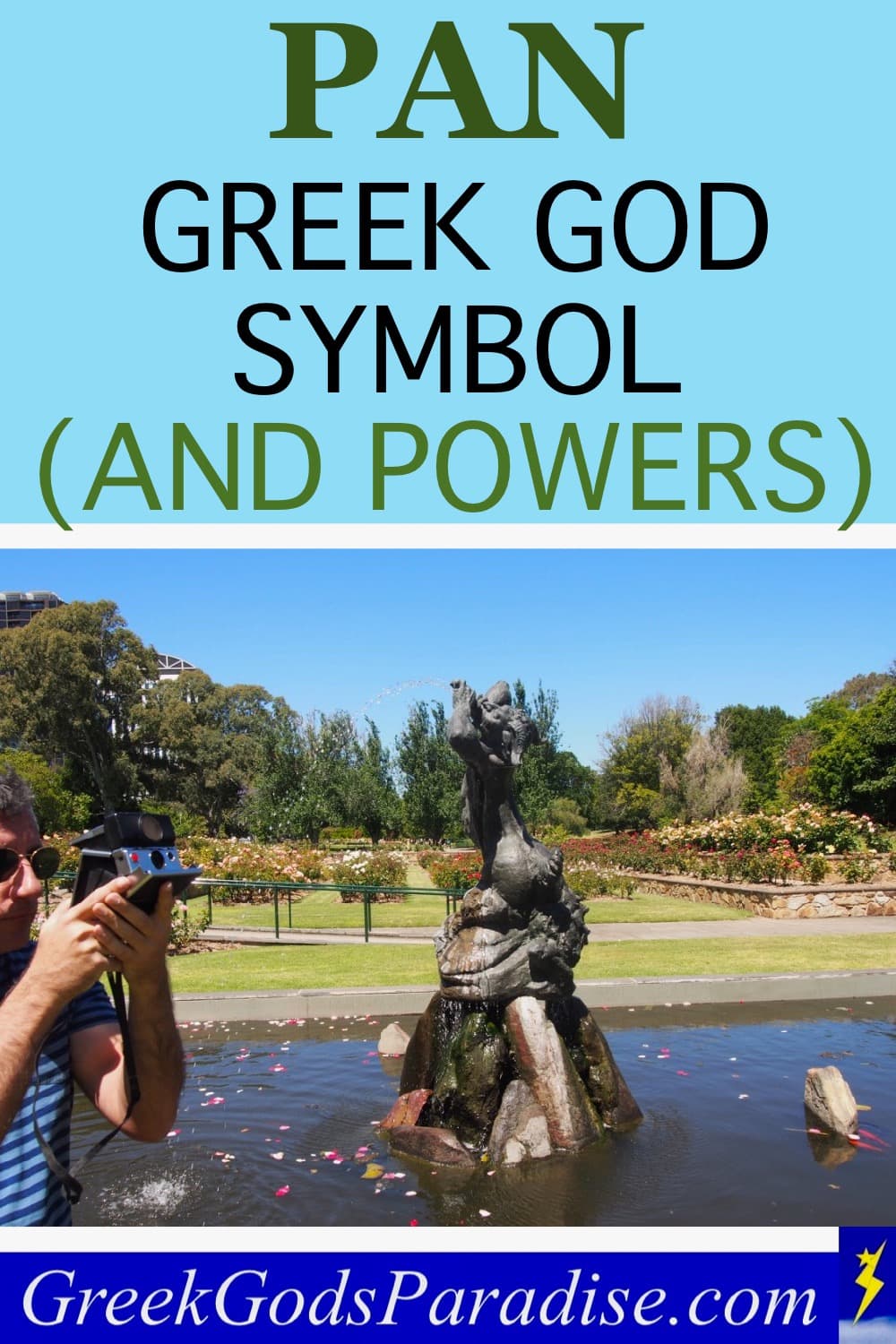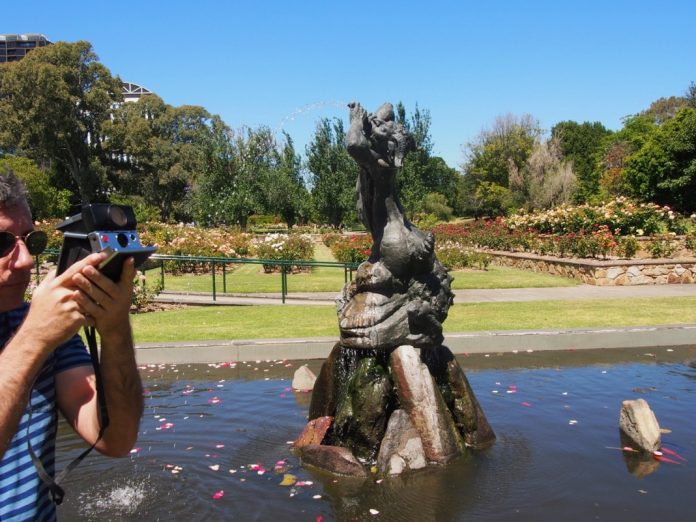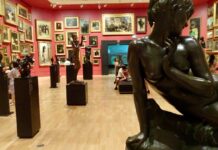The best Pan Greek God symbol ever created has to be the panpipes.
But what else does Pan symbolize?
Another thing worth thinking about is how and why so many nymphs found themselves to be in such close proximity to the goat-like God.
Then there are numerous Pan Greek God powers to ponder over.
As well as a weird duck association with Pan, which I only recently discovered. Yep, it’s true.
So let’s take a closer look at Pan, the Greek God of wild things, to see what we can uncover about the mysterious God who at one time famously roamed around in ancient Greece.
Hopefully, it will give everyone a deeper understanding of the ways of Pan, similar to a post of mine about Iris, Goddess of the rainbow.
The big difference here is that I concentrated all of my thoughts on Pan when taking relatable polaroid pictures, so relax and enjoy the show.
Who is Pan, and was Pan a good God?
Pan is the Greek God of the wild.
In ancient times – more so than now – Pan possessed strong associations with fertility and rustic nature.
Many people would think about Pan in ancient Greece.
All it took were things like rugged mountains, shepherds, pastures, goats, flocks, or hunting.
Seeing nymphs would even conjure up thoughts about Pan.
The most incredible thing about Pan is that the Greek God possessed a goat-like appearance.
Even so, Pan still mingled with plenty of nymphs and the Olympian Gods, so one can only conclude that Pan must have had a great personality.
Pan is indeed a fascinating God, so let’s see what we can learn about Pan.
Pan Greek God Symbol
Most people interested in Greek mythology know that Pan loved to play the panpipes.
Here’s a statue of Pan playing the panpipes while water gushes out of the pipes into a small artificial pond.
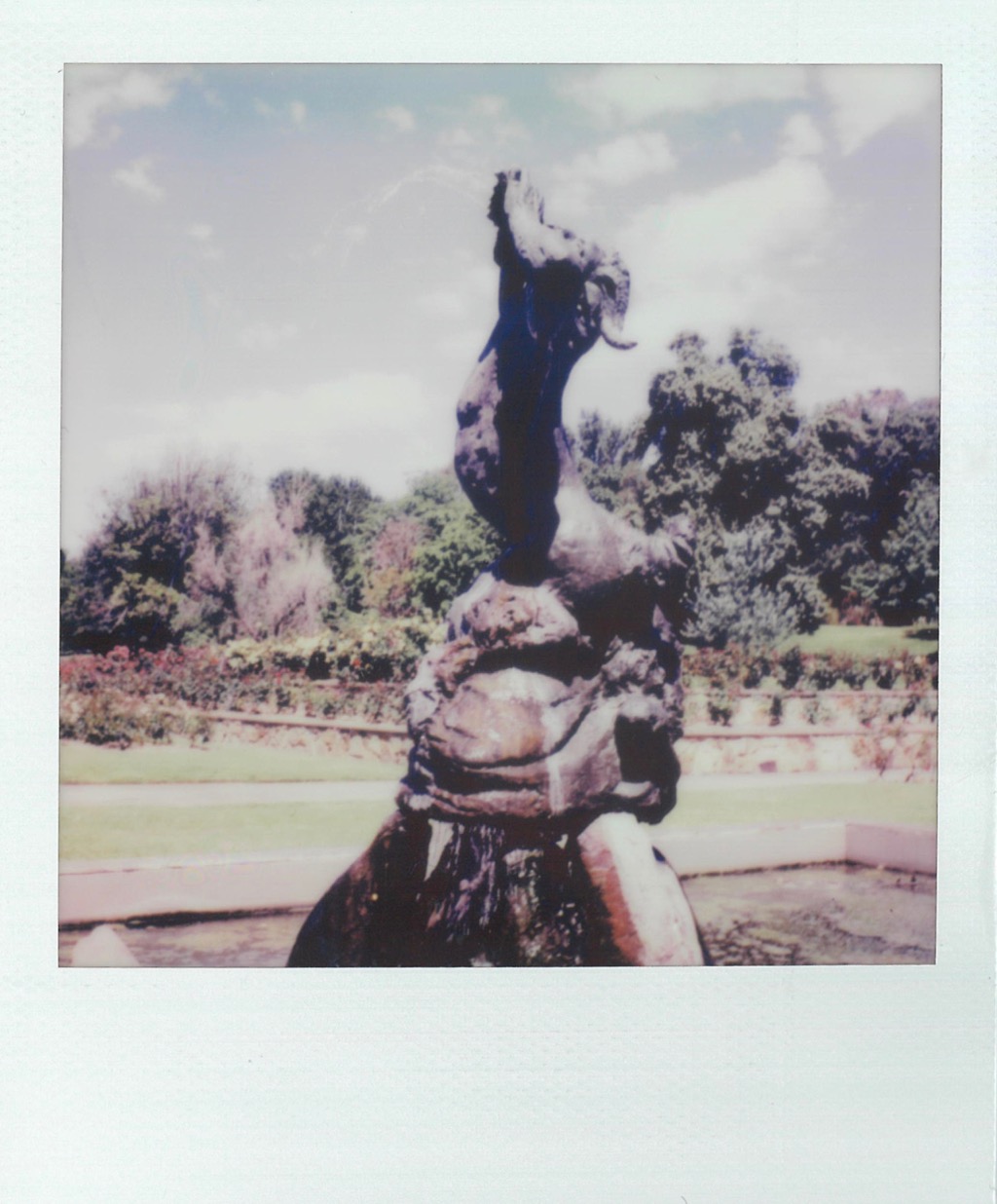
The panpipes (also known as a pan flute) is a musical instrument with several gradually increasing length pipes joined together.
Blowing on the panpipes from side to side gives a flute-like sound.
The musical instrument is quite rare, but people still play the panpipes to this day.
Panpipes are the most memorable Pan Greek God symbol to have survived through the ages which started in ancient Greece.
The other prominent symbol of Pan is his unmistakable goat-like resemblance.
My first polaroid picture of Pan could have turned out a bit better, especially regarding the background.
To see a faint sign of water squirting out of the panpipes is great, though it’s pretty hard to tell unless you look closely at the picture.
Also, I honestly can’t remember it being that cloudy when I took this photo of Pan.
However, it was a pretty good start.
Pan and Nymphs in Greek Mythology
Pan was the companion of the nymphs in Greek mythology.
It’s tough to comprehend why, but Pan had been wildly famous in ancient Greece.
One thing that all of the nymphs loved about Pan was his extraordinary musical ability.
Apollo was better than Pan, but Pan was still considered a great musician.
Pan and Apollo even had a musical contest. Pan was declared the winner by Midas, which infuriated Apollo so much that he turned the ears of Midas into the ears of an ass (donkey).
You seriously can’t make this kind of stuff up.
The Olympian Gods highly regarded Pan’s fun personality, and most of them thought that Pan was great company.
Dionysus, the Greek God of wine, even became one of Pan’s best friends.
One thing Pan loved to do was chase nymphs.
In Greek mythology, the three beautiful nymphs often associated with Pan included Syrinx, Echo, and Pitys.
I’ll tell you about the most famous Greek myth involving Pan in a moment.

Pan and Nymphs – Picture Review
After talking to the cool guy sitting down in the photo above, I took this great picture.
He saw me standing around with my SX-70 sonar camera in hand close to Pan, and we started talking.
That’s when I told him I wanted to take a photo of someone in front of the Pan statue, and his reply was something like, “Ok, let’s do it.”
After he moved into position next to Pan, I asked him if he could call over some girls to be by his side, and he obliged.
Not sure if it was done by the power of Pan or what, but he did it.
After the girls came over, I took three photos.
The girl dressed in white on the left turned out the best!
The Asian girl on the right also turned out great. At first, I thought her legs were too white, but then I remembered she wore white stockings.
One thing that stood out to me was the blonde beauty who looks like she’s wearing a light yellow top in the pic. But, in reality, she wore a much brighter yellow top, more of a fluorescent yellow.
The guy came out slightly darker than I would have liked. Luckily, I have a much better photo of him in another picture a bit further down.
It is hard to notice Pan in the pic, but Pan is in the middle of the rectangular pond.
I still think the picture turned out great, and I like it a lot.
It’s a unique picture, and what are the chances of taking a pic of three nymph-like girls so close to Pan in the modern world?
The Beautiful Nymph Syrinx
The most famous Greek myth about Pan was his fixation (lust) for the nymph Syrinx.
Syrinx was a nymph who loved to hunt using a bow and arrow. She was also a follower of the Goddess Artemis.
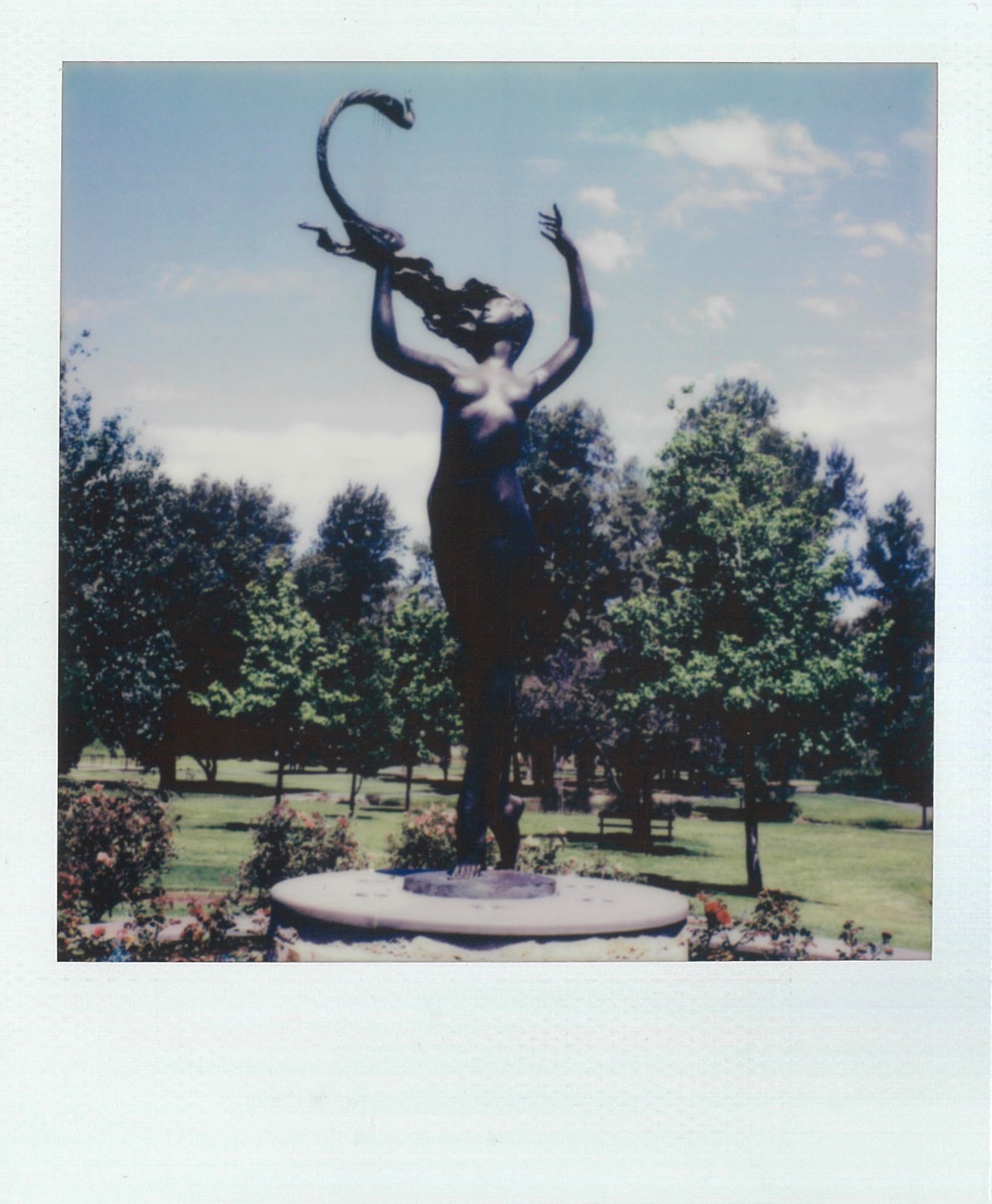
I love how this photo turned out! It has to be one of the best photos I have taken using my SX-70 sonar camera so far.
In Greek mythology, Pan happened to see Syrinx and fell in love with her on the spot.
Or it may have been lust at first sight. No one knows for sure.
Pan ended up pursuing Syrinx in the hope of gaining her affections 😉 but it didn’t work out.
Syrinx fled from Pan, which is no big surprise since Pan is more goat than human, so you can’t blame her for that.
In desperation to get away from Pan, the nymph jumped into a river to escape.
There she called on her sisters to come to her aid. They quickly came and were so moved by her plight that they decided to disguise Syrinx by turning her into a hollow reed.

And that’s how the making of the panpipes came about.
After Pan found out what had happened to Syrinx, he decided to cut off a few reeds to make a musical instrument that eventually became known as the panpipes.
The panpipes are also called “syrinx,” named after the beautiful nymph.
Thus, whenever Pan played the panpipes, you could say he was close to Syrinx.
Pan Greek God Symbol – Picture Review
I took the above photo when observing a garden bed filled with beautiful flowers from a higher level.
Two attractive girls were hugging one another as they greeted each other. Then, as they started talking, it made me think that it would be a great photo.
My mind was still slightly hesitant because it seemed like too much would be going on in the photo.
I also had to hope the girls would stay relatively still, so I took a chance, and I’m glad I did. But the top right-hand corner didn’t work out at all for some bizarre reason.
It doesn’t matter because the rest of the picture looks superb.
One girl even had her hand in the air like a reed, which matches the Greek myth.
You may be wondering where Pan is? He’s relatively close but out of sight in this picture.
Pan Greek God Powers
Pan has many powers. One of them is the power to cause panic! – Panikos in Greek
Some say Pan could also teleport between Mount Olympus and earth.
Pan also possessed superpower strength (much better than men) and excellent running ability.
Probably from all of the exercise when chasing nymphs around the place.
Pan Greek God powers also included the ability to turn objects into something else or other forms.
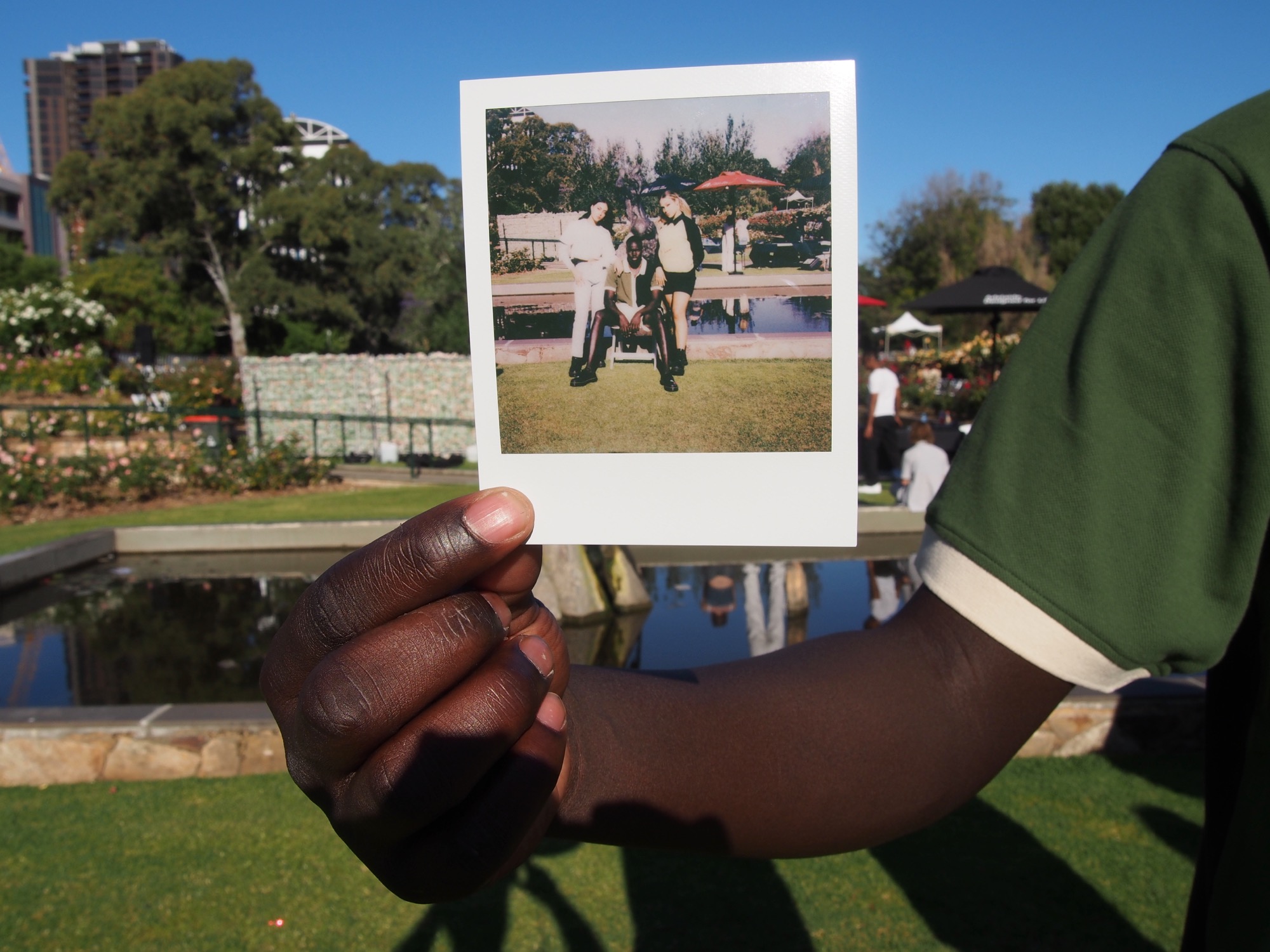
I gave this guy the first of three Polaroid pictures with a similar look.
All three of the pics had him in the photo. I wish I could remember his name because none of these pictures would have happened without him.
Pan, companion of the Nymphs
Here is a zoom-in of the above picture taken with my Olympus camera, and it looks fantastic!
You can see Pan quite clearly in this pic as well. The guy also looks much better in this pic.

The second polaroid photo that I took showed the three of them in a slightly different pose.
I gave that photo to the girl on the left. But, unfortunately, I didn’t get a copy of that one.
You can see the last (and third) polaroid photo taken at the top of this post. It’s the one with three girls in it. That one I kept for myself.
Greek God Pan Parents and Family Tree
One of the biggest mysteries in Greek mythology is who Greek God Pan’s parents were.
Some say that Pan is the son of Hermes, but I find that extremely hard to believe.
Pan’s family tree is in dispute, so I won’t add to the confusion.
While walking around one day, I hoped to find some nymphs to photograph.
But, instead, I stumbled upon this group of ducks crossing the street.
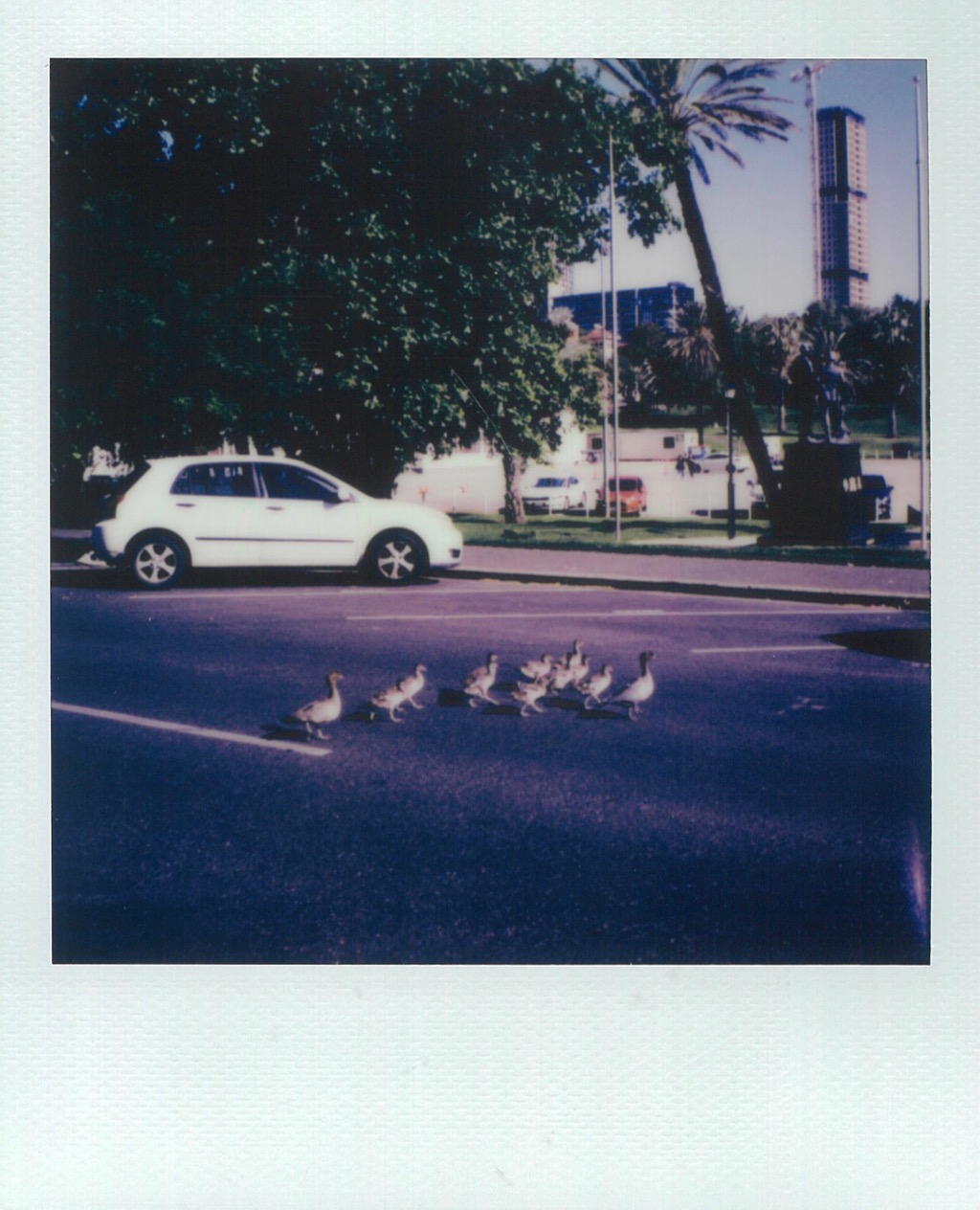
It looked like a large family of ducks because most of the ducks looked like newly born ducks.
The followers of Pan
It made me think about the followers of Pan. Why would anyone want to follow Pan?
He’s a goat, so it doesn’t make much sense when you think about it.
The other powerful Greek Gods known as the Olympians all had human-like appearances.
On occasion, Zeus would change form into an animal or bird, often done when seducing beautiful women.
However, Zeus constantly changed back into human form, whereas Pan never appeared in human form, from what I know.
Why ancient Greeks followed Pan is still unfathomable to me.
And the Greek myths involving Pan and nymphs. Between you and me, WTF!
Before taking the above picture, a guy riding a bike stopped next to me.
He saw me standing next to the ducks by the side of the road (almost blocking them).
Eventually, he asked me, “Are you here to protect them?”
No, I replied. Then I said, “Everyone can see them. I want to take a photo.”
I was timing it right and waiting for the ducks to cross the road. Then, as the ducks started walking across the street, I quickly acted and took my camera out of my bag.
That’s when I snapped this shot of the ducks as they were crossing the street.
It seemed symbolic because a war memorial was on the other side.
I’m still trying to figure out if it could have been some mysterious Pan Greek God symbol.
It’s not every day that you can take a polaroid picture of such a large family of ducks crossing the road, with a war memorial on the other side, all the while when thinking about Pan.
Pan Fountain Veale Gardens
Now, I can’t believe I’m doing this, but I will.
I’m going to honor the Greek God Pan with the first video shown on Greek Gods Paradise that I have created all by myself.
Take a walk around the glorious Pan fountain at Veale Gardens in South Australia and see what you think.
I’m an absolute beginner at making videos. You won’t see any miracles, but I’m happy enough with how it turned out. It’s all done in one take.
My zooming ability while using a manual focus Olympus lens isn’t great, with lots of jerking around, but it does create some anticipation.
What surprised me most was when a duck showed up when I least expected it.
Before the appearance of the duck, I was satisfied with a video of Pan that I had already taken.
However, after the duck showed up it seemed like a sign from Pan wanting me to take one more video, so I did.
One lap around Pan is all I needed, and this is the result. Serendipitously, the video turned out to be precisely 2:22 minutes long.
Use your headphones to hear the water splashing in the pond because you may not end up hearing the soothing sound unless you use a speaker port.
Not sure who the more extraordinary star in this Pan fountain video is supposed to be.
Is it Pan or the duck? Or maybe it’s Zeus in disguise.
Pan Greek God Pictures
You’ve seen and learned a bit more about Pan, so I’ll wrap things up now.
Here are the five polaroid pictures dedicated to the Greek God Pan in this series.
You can also see the order of the photos by looking at the number under the pic.
I started with film number 2 in this series because this wasn’t a brand new film packet.
You may remember that I took one more photo in Signs of Iris, Goddess of the rainbow, using a new packet of film. So I only had seven left for this series.
Note: Pictures 6 and 7 are missing because I gave them away.
Also, this is the first time that I’m not showing you a dark slide with a message on it.
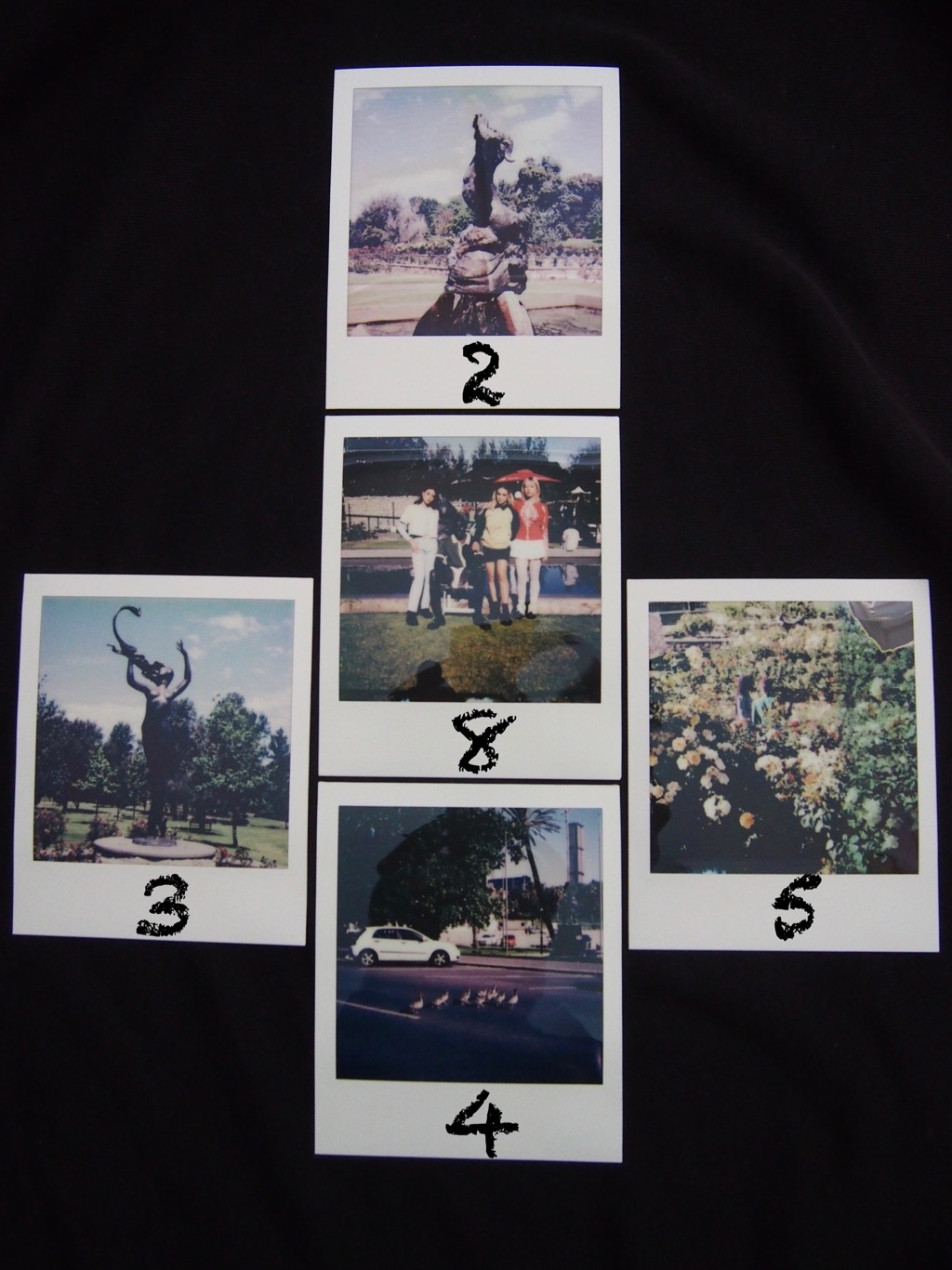
So that’s it for now. I hope you enjoyed Pan Greek God Symbol (and Powers).
Pin it … Share it
